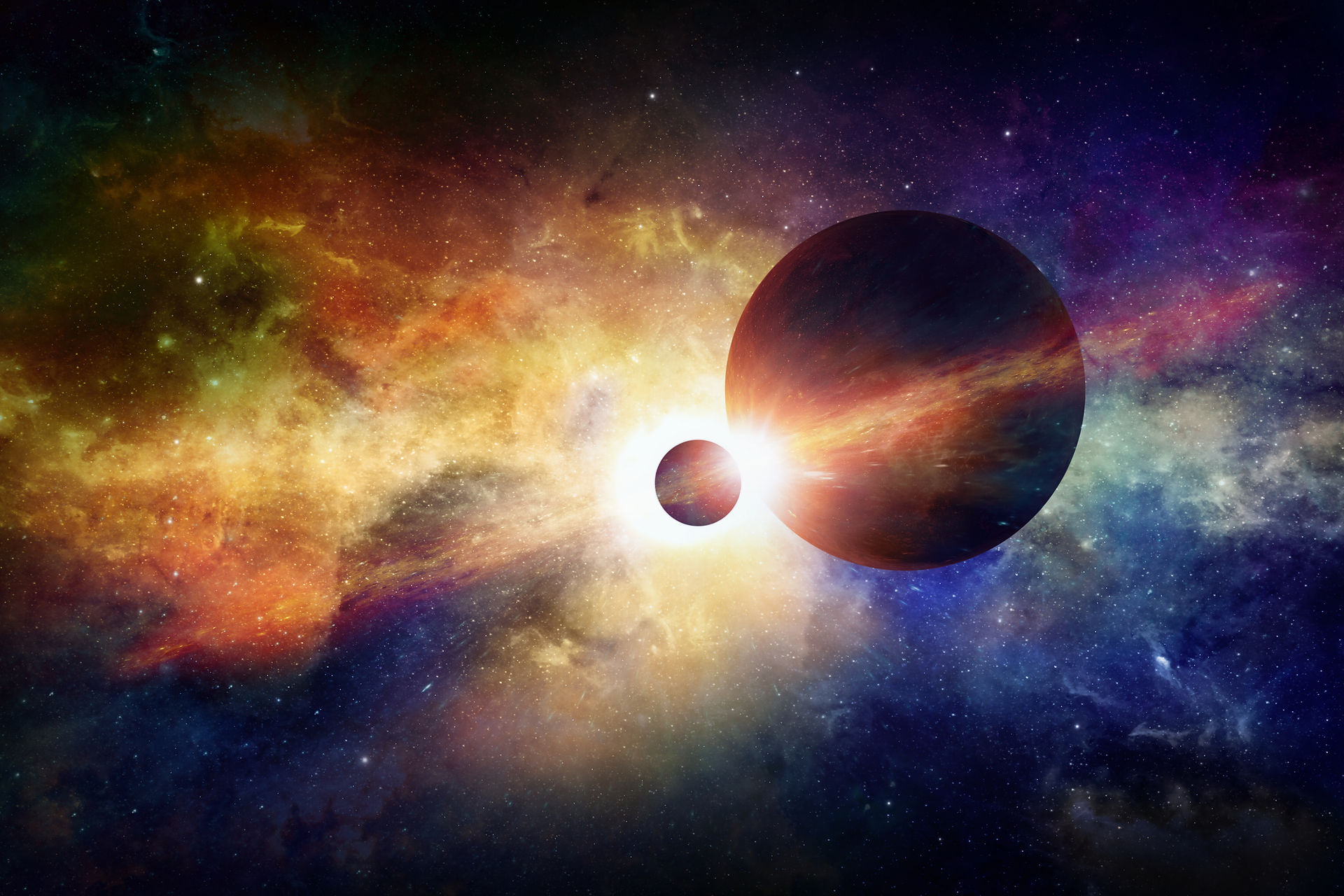The Detection of a “BTS Planet”
- Casey - Astrosoc Publicity Officer
- Feb 12, 2021
- 3 min read
Recently, a pinkish planet has caught the eye of the public. K-pop fans have been fascinated by how it resembles the planet appeared on the album cover of BTS World, and thousands were mesmerized by the planet’s dreamy, romantic colours. What wows people even more is that this planet was discovered by a 17-year-old high school summer intern, Wolf Cukier, just three days into his internship in NASA. However, few people know that this planet, which people are petitioning to name it Sophie, is actually the first planet detected by the Transiting Exoplanet Survey Satellite (TESS) that orbits not one, but two stars.

TOI 1338b (the planet’s official name) is the only detected planet in the 4.4 billion-years-old system TOI 1338, which lies 1320 light years away from the Earth. It is around 6.9 times larger than the Earth, with a mass 33 times the Earth’s, and is between the size of Neptune and Saturn. The planet orbits two stars: one a larger F-type star (much like our star, but 10% more massive), the other a smaller cooler M-type red dwarf (1/3 of our Sun’s mass).

The two stars orbit each other every 14.6 days, which means that they pass regularly in front of each other every 14.6 days. Astronomers call that an “eclipsing binary”. TOI 1338b orbits in almost exactly the same plane as the stars.
This is an essential factor for its discovery. TESS uses a method called the “transit photometry”. The passage of a planet (planetary transit) in front of a star reduces the brightness of that star, and so by observing the magnitude of dimming of the star, we could identify a planet and even figure out its diameter and its orbital period. Sounds easy, right?
Well, planets orbiting two stars are actually a lot more difficult to detect than those orbiting one. Eclipsing binaries could also cause distinct dips in the star’s brightness, and they would often look alike to planetary transits. Thanks to the orbital motion of its stars, the transits of TOI 1338b varies in depth and duration. TESS could also only see the transits crossing the larger star, the transits of the smaller star are too faint to detect.

And so, ultimately, Cukier had to visually examine each potential transit – Afterall, human eyes are much more sensitive to patterns in data, especially non-periodic patterns like those in the transit data. He distinguished the timing of eclipses from transits, leading to the successful detection of TOI 1338b.
After Cukier had identified TOI 1338b, scientists had to prove that the transits are legit and not a result of instrumental artifacts. A software package called “Eleanor” was employed, and radial velocity surveys also confirmed that TOI 1338b do exists.
We are actually lucky enough to have discovered TOI 1338b before 2023. Transit photometry only works when planets pass in front of the sun from our point of view, which means that if the orbit’s angle changes, transit photometry could not be applied as planet transits will cease in our perspective, which is exactly the case for system TOI 1338 after November 2023. Transits will only resume in 2041.
Every year, more than a hundred exoplanets are discovered, and so far NASA has discovered 12 circumbinary planets in 10 systems, with the belief that there are zillions more waiting to be discovered. Now maybe you could apply for an internship in NASA and see if you are able to detect one!
To find out more about TOI 1338b and its system, visit: https://exoplanets.nasa.gov/exoplanet-catalog/7626/toi-1338-b/
To find out more about eclipsing binaries, visit: https://www.youtube.com/watch?v=Azig0bnyQPQ
Reference Source: NASA




Comments